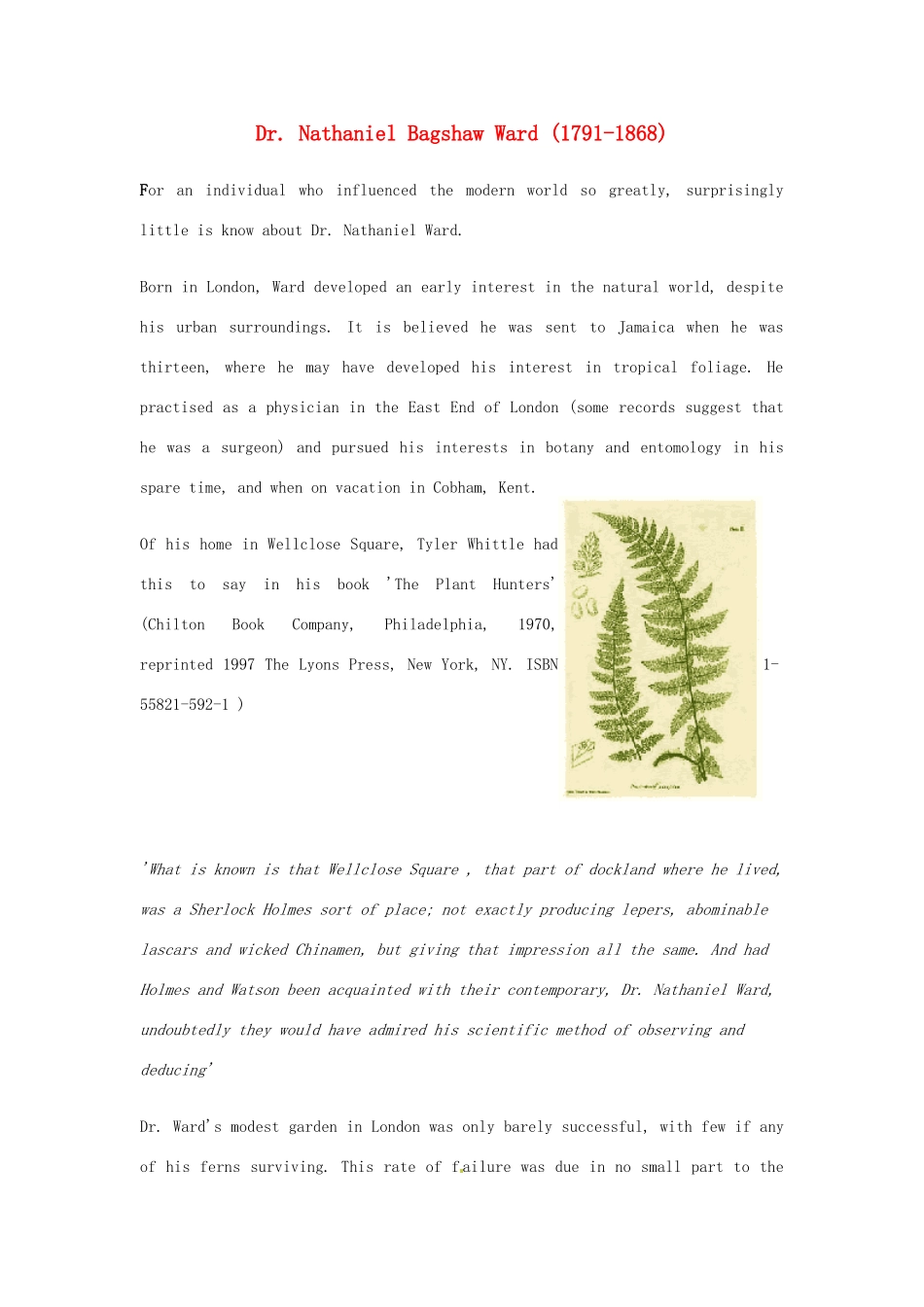Dr. Nathaniel Bagshaw Ward (1791-1868)For an individual who influenced the modern world so greatly, surprisingly little is know about Dr. Nathaniel Ward.Born in London, Ward developed an early interest in the natural world, despite his urban surroundings. It is believed he was sent to Jamaica when he was thirteen, where he may have developed his interest in tropical foliage. He practised as a physician in the East End of London (some records suggest that he was a surgeon) and pursued his interests in botany and entomology in his spare time, and when on vacation in Cobham, Kent. Of his home in Wellclose Square, Tyler Whittle had this to say in his book 'The Plant Hunters' (Chilton Book Company, Philadelphia, 1970, reprinted 1997 The Lyons Press, New York, NY. ISBN 1-55821-592-1 )'What is known is that Wellclose Square , that part of dockland where he lived, was a Sherlock Holmes sort of place; not exactly producing lepers, abominable lascars and wicked Chinamen, but giving that impression all the same. And had Holmes and Watson been acquainted with their contemporary, Dr. Nathaniel Ward, undoubtedly they would have admired his scientific method of observing and deducing'Dr. Ward's modest garden in London was only barely successful, with few if any of his ferns surviving. This rate of f ailure was due in no small part to the suffocating pollution of England's industrial age, the same choking atmosphere that caused the infamous 'Pea Soup' fogs. It was some time around 1829 when, pursuing his interest in entomology, Ward saved the pupa of a moth in a 'Natural environment' in a sealed jar. History does not clearly record the fate of the moth, but after some time he noticed that a fer n ...


